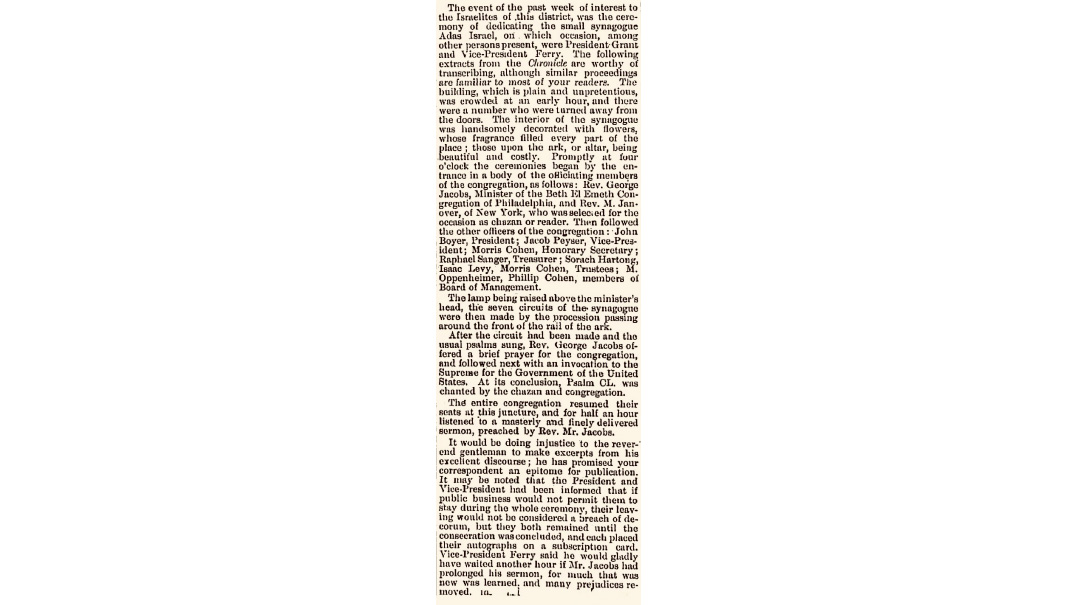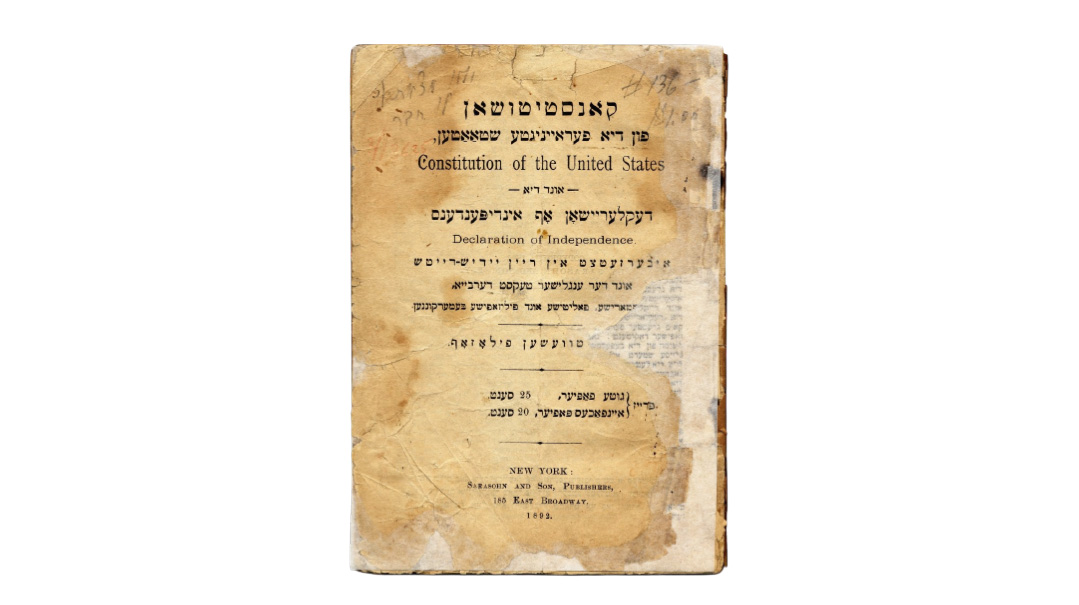The Great Miscommunicator
| June 18, 2024Elie Wiesel implored the president not to go to Bitburg: “That place is not your place. Your place is with the victims of the SS”

Title: The Great Miscommunicator
Location: Bergen-Belsen, Germany
Document: Letter forwarded by Senator Joseph R. Biden
Time: May 5, 1985
The rapid transition from Allied victory in World War II to Cold War geopolitical calculus saw a realignment of strategic priorities. With the Soviet Union drawing an Iron Curtain across Eastern Europe, right through the middle of defeated Germany, the newly established West German state would become a key member of the NATO defense alliance. Given this state of affairs, lingering over Germany’s Nazi past was generally viewed in the West as impolitic and inadvisable.
In 1985, to demonstrate the reconciliation of America and Germany and their enduring alliance, West German chancellor Helmut Kohl invited President Ronald Reagan to visit a German military cemetery. The visit was to take place during the G7 Summit in Bonn, which coincided with the 40th anniversary of VE Day. Reagan was keen to accommodate his ally, and the German military cemetery near Bitburg was chosen for the ceremony. Prior to Reagan’s trip it was discovered that among the 2,000 graves of German World War II soldiers were 49 graves of members of the Waffen SS. The entire SS had been designated a criminal organization at the Nuremberg Trials, and many Americans protested the president’s honoring the memory of SS members.
At a ceremony awarding him the Congressional Medal of Achievement, prominent Holocaust survivor Elie Wiesel implored the president not to go to Bitburg: “That place is not your place. Your place is with the victims of the SS.”
Other Jewish leaders similarly called on Reagan to reconsider, as did 53 US senators on April 15, and 101 members of the US House of Representatives on April 19, in bipartisan letters to the president. Exacerbating the situation, Reagan declined Chancellor Kohl’s suggestion that they also visit the notorious Dachau concentration camp. The president explained that he didn’t wish to “revive old feelings of guilt” among the German people at that time.
As the controversy began to heat up, diplomatic relations between the US and West Germany declined to what was perhaps their postwar nadir. Helmut Kohl insisted that Reagan follow through on his commitment to honor the German war dead, and noted that the overwhelming majority of the German people supported the visit.
Reagan stood firm in going ahead with visit, justifying it in terms that only made matters worse. “These [SS troops] were the villains, as we know, that conducted the persecutions and all. But there are 2,000 graves there, and most of those, the average age is about 18. I think that there’s nothing wrong with visiting that cemetery where those young men are victims of Nazism also, even though they were fighting in the German uniform, drafted into service to carry out the hateful wishes of the Nazis. They were victims, just as surely as the victims in the concentration camps.”
A firestorm of criticism followed the president’s remarks, which seemingly equated Nazi draftees with Jewish Holocaust victims. To try to make amends for the public relations disaster, the trip planners added a last-minute visit to the Bergen-Belsen concentration camp, where President Reagan would honor the memory of Nazi victims. He would then proceed to the Bitburg military cemetery, but his visit there would be shortened to a mere eight minutes.
On Sunday, May 5, President Ronald Reagan and Chancellor Helmut Kohl arrived at Bergen-Belsen for a solemn ceremony. The President laid a wreath at the mass graves, and then delivered a speech commemorating the victims’ memory:
Here lie people — Jews — whose death was inflicted for no reason other than their very existence. Their pain was borne only because of who they were and because of the G-d in their prayers. Alongside them lay many Christians — Catholics and Protestants. …What we’ve felt and are expressing with words cannot convey the suffering that they endured. That is why history will forever brand what happened as the Holocaust.
Here, death ruled, but we’ve learned something as well. Because of what happened, we found that death cannot rule forever, and that’s why we’re here today. We’re here because humanity refuses to accept that freedom of the spirit of man can ever be extinguished. We’re here to commemorate that life triumphed over the tragedy and the death of the Holocaust — overcame the suffering, the sickness, the testing and, yes, the gassings. We’re here today to confirm that the horror cannot outlast hope, and that even from the worst of all things, the best may come forth. Therefore, even out of this overwhelming sadness, there must be some purpose, and there is. It comes to us through the transforming love of G-d.
We learn from the Talmud that, “it was only through suffering that the Children of Israel obtained three priceless and coveted gifts: the Torah, the Land of Israel, and the World to Come.” Yes, out of this sickness — as crushing and cruel as it was — there was hope for the world as well as for the world to come. Out of the ashes — hope, and from all the pain — promise.…
Nothing illustrates this better than the story of a young girl who died here at Bergen-Belsen.… Just three weeks before her capture, young Anne Frank wrote these words: “It’s really a wonder that I haven’t dropped all my ideals because they seem so absurd and impossible to carry out. Yet I keep them because in spite of everything I still believe that people are good at heart. I simply can’t build up my hopes on a foundation consisting of confusion, misery, and death. I see the world gradually being turned into a wilderness. I hear the ever-approaching thunder which will destroy us, too; I can feel the suffering of millions and yet, if I looked up into the heavens, I think that it will all come right, that this cruelty too will end and that peace and tranquility will return again.”
Eight months later, this sparkling young life ended here at Bergen-Belsen. Somewhere here lies Anne Frank. …
We’re all witnesses; we share the glistening hope that rests in every human soul. Hope leads us, if we’re prepared to trust it, toward what our President Lincoln called the better angels of our nature. And then, rising above all this cruelty, out of this tragic and nightmarish time, beyond the anguish, the pain, and the suffering for all time, we can and must pledge: Never again.
Billions for Bitburg
Just hours before President Reagan departed for West Germany, the administration announced a $1.5 billion emergency aid package for Israel. This came in addition to $1.26 billion in economic grants and $1.8 billion in military grants already budgeted. Critics of Israel suggested that this was intended to appease American Jews, who were outraged by Reagan’s planned visit to the Bitburg cemetery, where Waffen-SS soldiers were buried. Secretary of State George Schultz denied any connection, but many later claimed that the aid went a long way toward calming Israeli leadership. Commenting on the “Bitburg Affair,” Israeli prime minister Shimon Peres famously stated, “When a friend makes a mistake, the friend remains a friend, but the mistake remains a mistake.”
A Million for Mengele
One of the strongest responses to Reagan’s ill-advised trip to Bitburg came from Israeli justice minister Moshe Nissim. Addressing the Knesset, Nissim announced a $1 million reward for information leading to the capture of SS officer Josef Mengele.
“We have witnessed in these days manifestations of reconciliation and forgiveness toward those who perpetrated the greatest atrocities the world has known since G-d created man,” Nissim declared. He criticized the equivalence made by the leader of the free world between German soldiers and concentration camp victims, calling it “a hair-raising equation that must horrify any civilized person.”
However, this effort was ultimately in vain. Forensic efforts confirmed that Mengele had drowned in 1979 while swimming off the coast of Bertioga, Brazil. Using the assumed name “Wolfgang Gerhard,” he had been buried in a Sao Paulo cemetery. Brazilian officials exhumed the body, and extensive forensic examinations indicated with high probability that the remains were those of Josef Mengele.
(Originally featured in Mishpacha, Issue 1016)
Oops! We could not locate your form.







